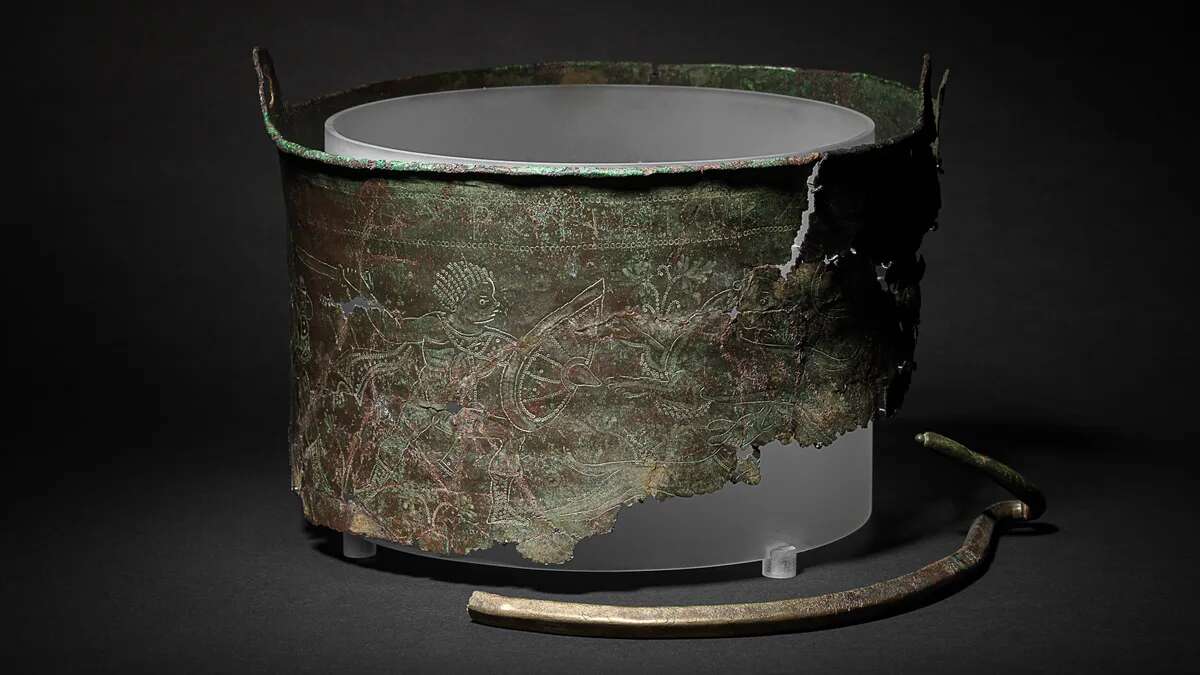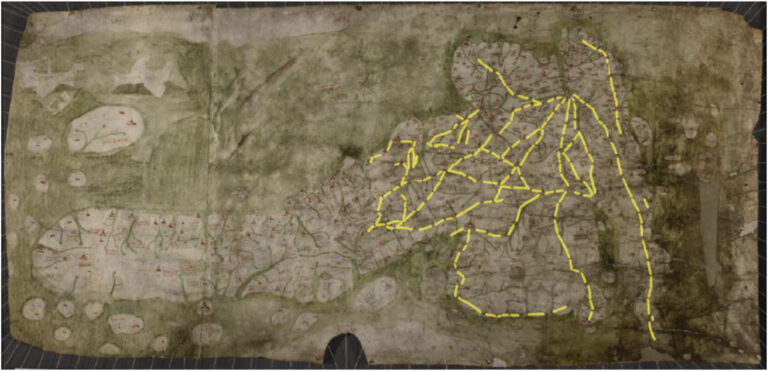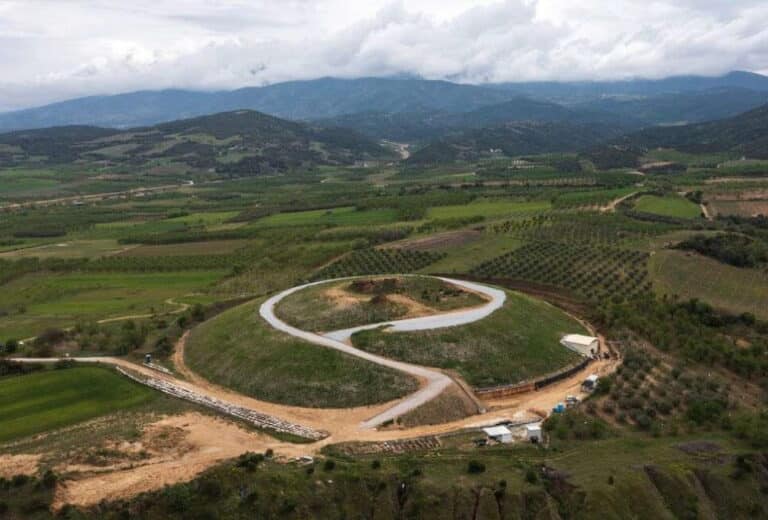
An old copper-alloy bucket found at the famous Anglo-Saxon burial site of Sutton Hoo in eastern England has revealed a surprising discovery: it once held the cremated bones of a high-status individual. Though the bucket was unearthed nearly four decades ago, new analysis shows it played a much more meaningful role in burial customs than originally thought.
Originally discovered in 1986, the object—called the Bromeswell Bucket—was found near one of the ship burials at Sutton Hoo. The vessel is believed to have been made in the Byzantine Empire, possibly in what is now Turkey, around the 5th century. That makes it older than the ship burial itself, which dates to the 6th or early 7th century. Archaeologists believe the bucket was brought to England through long-distance trade or diplomatic exchange.
The item features an intricate design showing a North African hunting scene and includes a Greek inscription wishing the owner long life and good health. Experts had long suspected that the bucket was an item of great value, likely gifted to someone of high rank.
Cremated Remains Suggest a Burial of Elite
Researchers from the York Archaeological Trust recently carried out a careful micro-excavation of the bucket’s contents, which had been largely undisturbed since its discovery.
According to the National Trust, which oversees the Sutton Hoo site, soil inside the bucket was slowly removed to uncover cremated human remains, including parts of a skull and ankle. The bones may have originally been placed in a fabric bag that has since decayed.
Mystery solved! The 1,400-year-old Sutton Hoo bucket's purpose is now clear. A truly remarkable archaeological discovery. #SuttonHoo #History #Archaeology pic.twitter.com/Q4DfKlQZNH
— Jitendar Kumar (@AutoMev) May 20, 2025
Archaeologist Angus Wainwright from the National Trust said the new findings confirm the bucket was not just a decorative object, but also used in a personal and ceremonial way. He added that it likely held the remains of someone with high status within the Sutton Hoo community.
Alongside the bones, the team found an antler comb, a common personal item in Anglo-Saxon times. Such combs were used by both men and women, not only for grooming but also to help control lice. Experts also found animal bones, possibly from a horse, suggesting that a symbolic or ritual sacrifice might have taken place.
Although the identity of the individual remains unknown, scientists hope to learn more through radiocarbon dating and DNA testing. These methods could offer clues about the person’s age, gender, and when the cremation occurred.
New Insights Into a Complex Burial Ground
Sutton Hoo is one of the most important archaeological sites in the United Kingdom, best known for its ship burials and treasures linked to early English royalty. The site, which was part of a lively trade network, has yielded artifacts from across Europe and the Middle East, reflecting a rich blend of cultural influences.
Helen Geake, an Anglo-Saxon expert involved with the excavation, explained that the bucket shows a fascinating mix of cultures. She described it as a classical object from the Mediterranean world used in a northern European cremation—something that highlights the unusual nature of the Sutton Hoo site.
Excavations at Sutton Hoo are continuing through June 13, led by archaeologists, conservators, and volunteers from the U.K. television series Time Team, the National Trust, and Field Archaeology Specialists. Tim Taylor, the producer of Time Team, said this phase of the project offers a unique chance to learn even more about the site’s rich past and hinted at further discoveries in the coming months.







